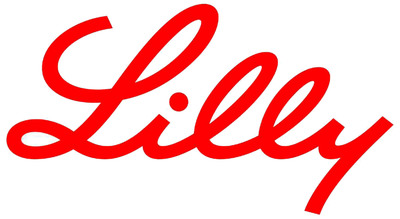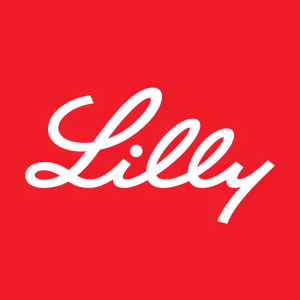In a first-of-its-kind fixed dose study, once weekly insulin efsitora alfa leads to A1C reduction similar to daily insulin
Rhea-AI Summary
Eli Lilly has announced positive topline results from two phase 3 clinical trials, QWINT-1 and QWINT-3, evaluating once weekly insulin efsitora alfa in adults with type 2 diabetes. The trials showed that efsitora was non-inferior to daily basal insulins in reducing A1C levels.
QWINT-1 studied insulin-naïve patients, using a novel fixed-dose regimen with four doses administered via a single-use autoinjector. QWINT-3 focused on patients switching from daily basal insulin. Both trials met their primary endpoints, demonstrating similar A1C reductions to daily insulins glargine and degludec, respectively.
Efsitora showed a comparable safety profile to daily basal insulins, with QWINT-1 reporting approximately 40% lower rates of severe or clinically significant hypoglycemic events compared to insulin glargine.
Positive
- Efsitora showed non-inferior A1C reduction compared to daily basal insulins in both trials
- QWINT-1 trial used a novel fixed-dose regimen, potentially simplifying insulin therapy initiation
- In QWINT-1, efsitora showed approximately 40% lower rates of severe or clinically significant hypoglycemic events compared to insulin glargine
- QWINT-3 participants on efsitora spent more time in glucose range compared to baseline
Negative
- In QWINT-3, efsitora showed slightly higher rates of severe or clinically significant hypoglycemic events compared to insulin degludec (0.84 vs 0.74 events per patient-year)
News Market Reaction 1 Alert
On the day this news was published, LLY declined 3.55%, reflecting a moderate negative market reaction.
Data tracked by StockTitan Argus on the day of publication.
In the phase 3 study, QWINT-1, efsitora was administered via four fixed doses once weekly in a single-use autoinjector in people with type 2 diabetes using basal insulin for the first time
In a second phase 3 study, QWINT-3, efsitora also delivered non-inferior A1C reduction compared to daily insulin in people with type 2 diabetes switching from daily basal injections
"Once weekly insulins, like efsitora, have the potential to transform diabetes care as we know it," said Jeff Emmick, M.D., Ph.D., senior vice president, product development, Lilly. "Many patients are reluctant to start insulin because of the burden it places on them. With a simple fixed-dose regimen, once-weekly efsitora could make it easier for people with diabetes to start and manage insulin therapy, while reducing the impact it has on their day-to-day lives."
QWINT-1 evaluated the efficacy and safety of once weekly efsitora compared to once daily insulin glargine for 52 weeks. The trial randomized adults with type 2 diabetes who are insulin naïve to receive either efsitora once weekly in a single-use autoinjector or insulin glargine once daily. Efsitora was titrated across four fixed doses1 at four-week intervals, as needed for blood glucose control. The study's goal was to provide data supporting real-life applications of fixed dose regimens, which have the potential to make it easier for people living with diabetes to start and manage insulin therapy.
The trial met its primary endpoint of non-inferior A1C reduction with efsitora compared to insulin glargine at week 52. For the efficacy estimand2,3, efsitora reduced A1C by
QWINT-3 evaluated the efficacy and safety of once weekly efsitora compared to once daily insulin degludec for 78 weeks in adults with type 2 diabetes currently treated with basal insulin. Participants were randomized 2:1 to receive either efsitora once weekly or insulin degludec once daily.
The QWINT-3 trial met its primary endpoint of non-inferior A1C reduction with efsitora compared to insulin degludec at week 26. For the efficacy estimand7, efsitora reduced A1C by
Additionally, participants taking efsitora or insulin degludec spent approximately two hours more time in range (glucose 70-180 mg/dL) per day for weeks 22-26 compared to baseline. For the efficacy estimand11, participants taking efsitora spent
In both QWINT-1 and QWINT-3, the overall safety and tolerability profile of efsitora was similar to that of daily basal insulin therapies for the treatment of type 2 diabetes. In QWINT-1, estimated combined rates of severe or clinically significant (blood glucose <54 mg/dL) hypoglycemic events per patient-year of exposure from weeks 0-52 were 0.50 with efsitora vs. 0.88 with insulin glargine – approximately
Detailed results for QWINT-1 and QWINT-3 will be shared at an upcoming congress and published in a peer-reviewed journal. Additionally, detailed results for QWINT-2 and QWINT-5 will be presented at the European Association for the Study of Diabetes (EASD) Annual Meeting 2024.
About the QWINT clinical trial program
The QWINT phase 3 global clinical development program for insulin efsitora alfa (efsitora) in diabetes began in 2022 and has enrolled more than 4,000 people living with type 1 or type 2 diabetes across five global registration studies.
QWINT-1 (NCT05662332) was a parallel-design, open-label, treat-to-target, randomized controlled clinical trial comparing the efficacy and safety of efsitora as a once weekly basal insulin using a fixed dose to insulin glargine for 52 weeks in insulin-naïve adults with type 2 diabetes. The trial randomized 796 participants across the
QWINT-3 (NCT05275400) was a multicenter, randomized, parallel-design, open-label trial comparing the efficacy and safety of efsitora as a once-weekly basal insulin to insulin degludec for 78 weeks after a three-week lead-in period, and followed by a five-week safety follow up period, in adults with type 2 diabetes who are currently treated with basal insulin. The trial randomized 986 participants across the
About insulin efsitora alfa
Insulin efsitora alfa (efsitora) is a once-weekly basal insulin, a fusion protein that combines a novel single-chain variant of insulin with a human IgG2 Fc domain. It is specifically designed for once-weekly subcutaneous administration, and with its low peak-to-trough ratio, it has the potential to provide more stable glucose levels (less glucose variability) throughout the week. Efsitora is in phase 3 development for adults with type 1 and 2 diabetes.
About Lilly
Lilly is a medicine company turning science into healing to make life better for people around the world. We've been pioneering life-changing discoveries for nearly 150 years, and today our medicines help more than 51 million people across the globe. Harnessing the power of biotechnology, chemistry and genetic medicine, our scientists are urgently advancing new discoveries to solve some of the world's most significant health challenges: redefining diabetes care; treating obesity and curtailing its most devastating long-term effects; advancing the fight against Alzheimer's disease; providing solutions to some of the most debilitating immune system disorders; and transforming the most difficult-to-treat cancers into manageable diseases. With each step toward a healthier world, we're motivated by one thing: making life better for millions more people. That includes delivering innovative clinical trials that reflect the diversity of our world and working to ensure our medicines are accessible and affordable. To learn more, visit Lilly.com and Lilly.com/news, or follow us on Facebook, Instagram and LinkedIn. P-LLY
Cautionary Statement Regarding Forward-Looking Statements
This press release contains forward-looking statements (as that term is defined in the Private Securities Litigation Reform Act of 1995), including statements about insulin efsitora alfa as a potential treatment for people with type 2 diabetes and the timeline for future readouts, presentations, and other milestones relating to insulin efsitora alfa and its clinical trials, and reflects Lilly's current beliefs and expectations. However, as with any pharmaceutical product, there are substantial risks and uncertainties in the process of drug research, development, and commercialization. Among other things, there is no guarantee that planned or ongoing studies will be completed as planned, that future study results will be consistent with study results to date, that insulin efsitora alfa will prove to be a safe and effective treatment for type 2 diabetes, that insulin efsitora alfa will receive regulatory approval, or that Lilly will execute its strategy as expected. For further discussion of these and other risks and uncertainties that could cause actual results to differ from Lilly's expectations, see Lilly's Form 10-K and Form 10-Q filings with the United States Securities and Exchange Commission. Except as required by law, Lilly undertakes no duty to update forward-looking statements to reflect events after the date of this release.
1 Participants treated with efsitora received a starting dose of 100 units of insulin, followed by escalation to fixed dosages of 150 units, 250 units and 400 units every 4 weeks, as needed, until achieving a target fasting blood glucose of 80-130 mg/dL. Participants with fasting blood glucose greater than 130 mg/dL on or after 16 weeks were transferred to flexible dosing.
2 The efficacy estimand represents the treatment effect had all participants adhered to the study drug without initiating rescue therapy for persistent severe hyperglycemia.
3
4 From a baseline A1C of
5 Treatment-regimen estimand represents the efficacy irrespective of adherence to the investigational medicine or introduction of rescue therapy for persistent severe hyperglycemia.
6
7
8 From a baseline A1C of
9
10 From a baseline A1C of
11
12 From a baseline time in range of
13
14 From a baseline time in range of
15 From a baseline tight time in range of
Refer to: | Niki Smithers; smithers_niki@lilly.com, 317-358-9074 (Media) |
Joe Fletcher; jfletcher@lilly.com, 317-296-2884 (Investors) |
![]() View original content to download multimedia:https://www.prnewswire.com/news-releases/in-a-first-of-its-kind-fixed-dose-study-once-weekly-insulin-efsitora-alfa-leads-to-a1c-reduction-similar-to-daily-insulin-302238497.html
View original content to download multimedia:https://www.prnewswire.com/news-releases/in-a-first-of-its-kind-fixed-dose-study-once-weekly-insulin-efsitora-alfa-leads-to-a1c-reduction-similar-to-daily-insulin-302238497.html
SOURCE Eli Lilly and Company








